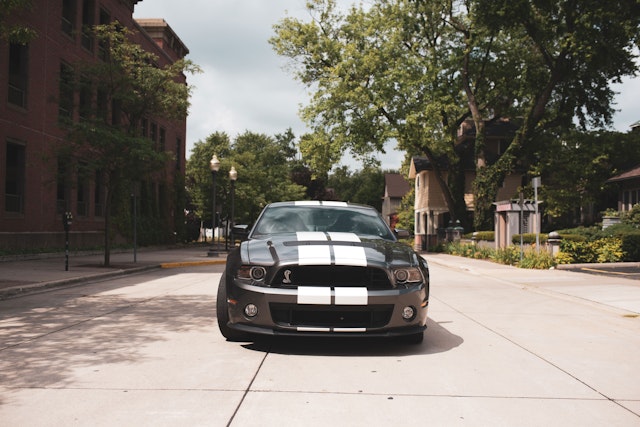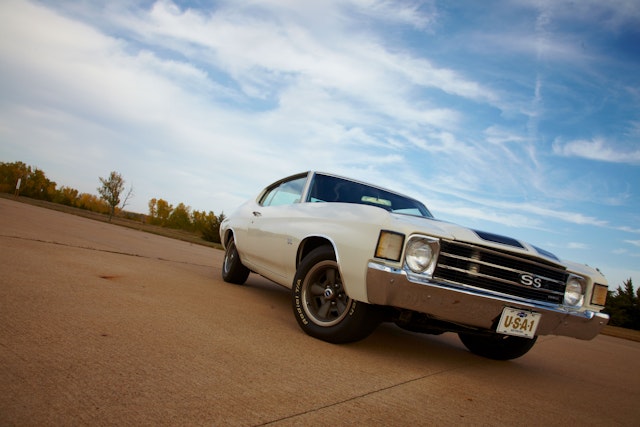Can I use my classic car as a daily driver?

Every classic car owner walks a fine line when it comes to how much they take their prized piece of transportation onto the streets. Drive it too much and you run the risk of broken parts and damage, not to mention the added miles on the odometer. Drive it too little? You run the risk of damaging things like tires, belts and engine seals that need regular use...and you bought the thing to enjoy driving it, right?
Most of us will find a middle ground where we’re driving it enough to enjoy the expense of upkeep and maintenance, while not relying on a classic car for everyday trips to the grocery store or to drop the kids at school. But … what if you wanted to use your classic car as a daily driver? What’s the best daily driver sports car? And what do you need to know to keep your classic in everyday shape?
At the end of the day, all cars are made to be driven, and that includes classic cars. If you choose to spend more time behind the wheel of your classic car than you spend in the garage looking at it, good for you - here’s a few things to keep in mind.
What’s the biggest risk to my classic car?
Depending on where you live, you’re more at risk of fender benders and other damage in an urban or suburban setting. The more parking lots you end up in, the more likely a door will scuff your paint or shopping cart will dent your bumper.
If you spend more time driving in rural settings, your classic car is statistically more likely to leave you stranded by the side of the road than a modern-day sedan, SUV or pickup truck, which could make for a pretty bad day.
Overall, added miles on your classic car means added maintenance, which often gets more expensive as your car gets older. Parts can be harder to find, and if you break something vital to the operation of the vehicle, you might spend days waiting for your car to come out of the garage.
If you’re concerned about maintaining the value of your classic car, then maybe it’s not the best to make it your daily driver. Looking to simply enjoy the experience of driving a classic on a regular basis, with no concerns about what someone else will pay you for it later? Drive on!
Is it safe to drive a classic car every day?
Only your mechanic can tell you conclusively whether or not your classic car is physically ready to be on the road every single day, but we can tell you this (and it shouldn't be a surprise): Classic cars are less safe than a modern day vehicle with three-point seat belts, air bags, anti-lock brakes and other safety-first functionality.
If your car is from an era where the cigarette lighter received more engineering than the seat belts, know that there are other safer options if that’s your first priority, and ways to make your classic car safer. We’d also recommend keeping this kind of classic on surface streets and away from extended times at freeway speeds. Track day? Different story.

Should I update my classic car to drive it daily?
If you’re driving your classic car every day, you’re going to have to budget for repairs. A car from the 1960s or 1970s does not have nearly the same kind of longevity that a modern day car does, nor does it have the systems that keep a car comfortable and reliable.
If you’re okay with small creature comforts that you can’t easily update - manual windows and shafted car stereos, for example - then you might be ready to make your muscle car your most-driven vehicle.
With that in mind, let’s look at a few things you can do to make your daily driver classic a bit more reliable and comfortable (if a little less “original”). If the idea of all these updates make you cringe at the changes your classic car might need, maybe it’s best to keep your classic for weekend cruising. But if the following list seems like a reasonable number of updates to make to your vehicle, then let’s go for it!
Hagerty experts recommend:
- Disc brakes, at least in the front.
- Power steering, since you’ll have to parallel park occasionally.
- Air conditioning, especially in warmer climates. Along with an AC system, consider updating your cooling system with an aluminum radiator and electric puller fans.
- Electronic ignition and an overall electrical update. With AC, stereos, electronic ignition, etc., make sure your alternator, battery and wiring are up to the job.
- Windshield wipers. If your classic is old enough to have vacuum wipers, upgrade to electrics. If electric wipers were an option for your model year, you can often find used original pieces. Or consider an aftermarket electric system.
- Suspension upgrades. Gas shocks for sure. Make sure bushings, ball joints, etc., are in good order.
- Lighting. Step up to halogen headlights up front and LEDs in the rear. It’s an easy project and several companies offer affordable conversions.
- Transmission. If you spend substantial time on cross-country trips, consider upgrading your manual or standard transmission to add overdrive. This is not a cheap option, but you’ll get better mileage and put less wear on the engine.
- Most important are the safety upgrades: If your classic didn’t come with seat belts, add them. Consider three-point belts that are offered by the aftermarket. And, of course, carry a fire extinguisher and jumper cables.
Last but not least, make sure your insurance is up to the daily miles you plan to add to your classic car. Do you have the correct policy? The right amount of coverage? You don’t want to have collector-car insurance that mandates low-mileage, kept-in-a-garage status when you’re driving the car every day.
And make sure you have emergency road service. Better safe than sorry. Remember that Hagerty Drivers Club members can choose from a variety of roadside service and repair options, including free towing, truck tracking and unlimited service calls.